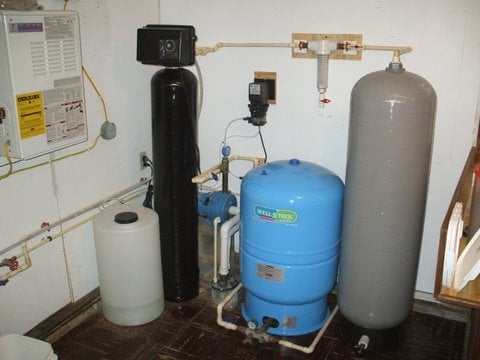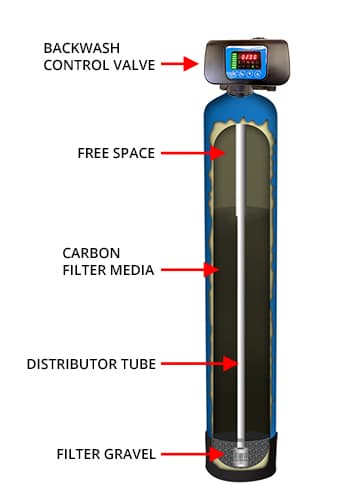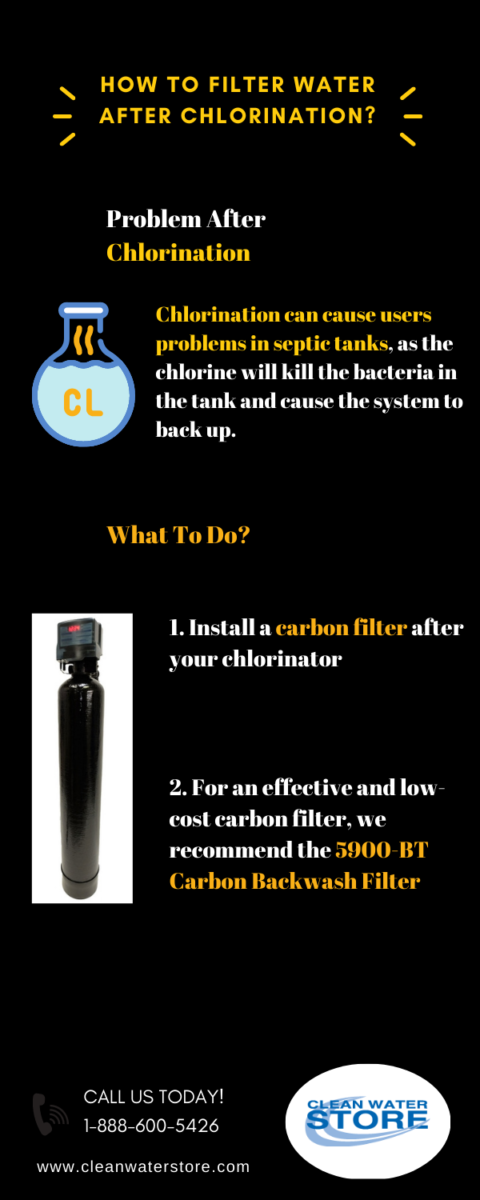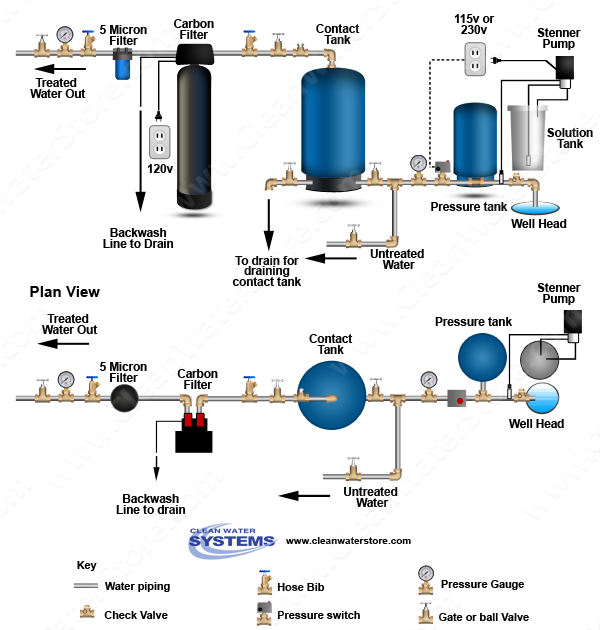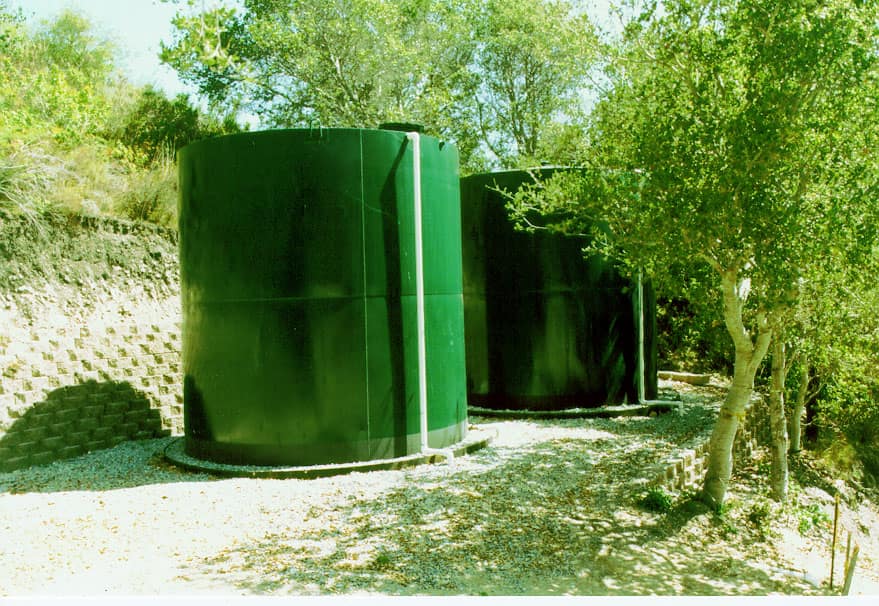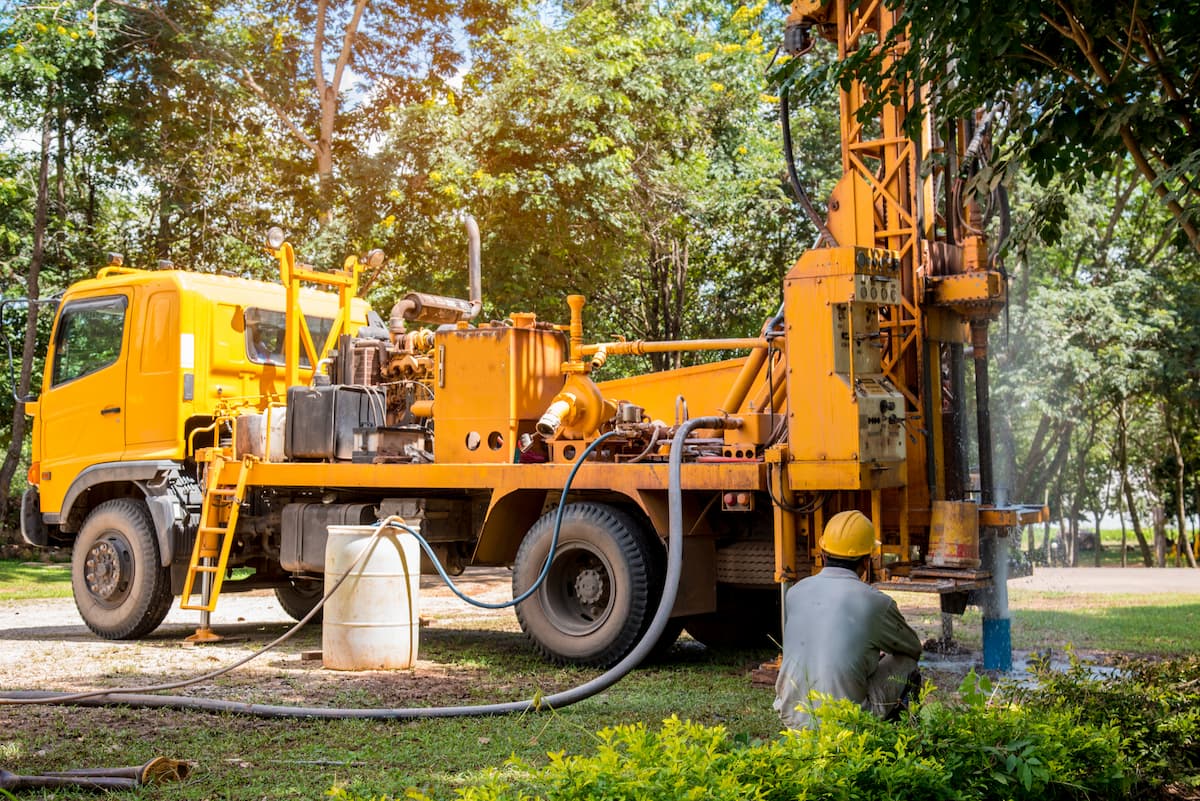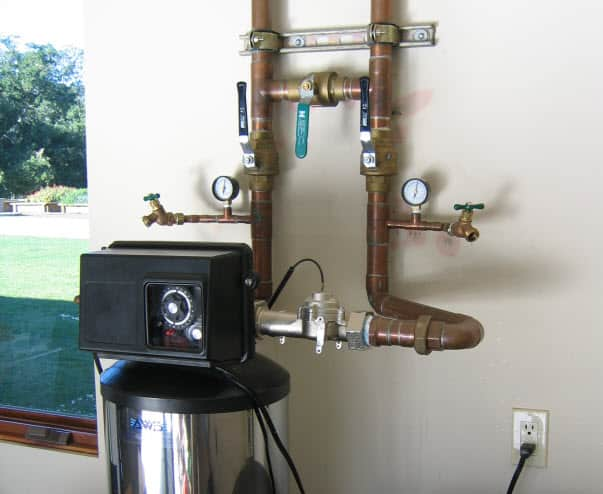How to Filter Water After Chlorination
How to Filter Chlorine from Water After Chlorination
A good question to ask is how to filter chlorine from water.
Chlorination can be a very effective treatment method for bacteria and odors and a good pre-treatment for filtering iron and manganese particles. However, chloramines are used alongside chlorine in municipal water treatment to kill microorganisms effectively, highlighting their stability. The process can cause users problems in septic tanks, as the chlorine kills the bacteria in the tank and causes the system to back up.
Besides septic tank users, many people are turned off by the idea of bathing in and drinking chlorinated water. Chlorine levels in drinking water, when maintained at or below 4 parts per million (ppm), are considered safe for consumption according to regulatory agencies like the EPA and CDC.
Fortunately, there are several good methods to filter chlorine from water. Filtration systems can effectively remove chlorine taste and odor, providing clean and healthy drinking water. Chlorine interacts with other components in water, forming by-products that can have negative health effects. It can be as easy as installing a carbon filter after your chlorinator.
Introduction to Water Filtration
Water filtration is the process of removing contaminants and impurities from water to make it safe for drinking, cooking, and other uses. With the increasing presence of pollutants in tap water, using a water filter to remove chlorine, lead, and other contaminants has become essential. Activated carbon filters and reverse osmosis systems are popular options for removing chlorine and other impurities from water.
Activated carbon filters work by adsorbing contaminants onto the surface of the carbon, effectively removing chlorine and improving the water's taste and odor. Reverse osmosis systems, on the other hand, use a semi-permeable membrane to filter out most contaminants, including chlorine, lead, and other harmful substances.
A whole-house system is an excellent choice for those looking to provide filtered water to the entire home. These systems are installed at the point where water enters the house, ensuring that every tap delivers clean, filtered water.
Additionally, a shower filter can be installed to remove chlorine and other chemicals from the water used for bathing, protecting your skin and hair from the drying effects of chlorine. Whether you choose a whole house system, a reverse osmosis system, or a shower filter, investing in a quality water filter is crucial in ensuring your tap water's safety and quality.
How to Filter Chlorine from Water?
There are three primary chlorine/chloramine removal methods in water treatment. All filtration systems use activated carbon to effectively remove chlorine tastes and odors.
Filtering water from specific fixtures like the kitchen faucet is important for home health and cleanliness.
- Carbon Cartridge Filter Systems
- Carbon Upflow Non-Backwashing Systems
- Carbon Automatic Backwash Systems
Advanced reverse osmosis systems can also remove fluoride along with other harmful contaminants.
Ceramic filters can remove various contaminants, including chlorine and industrial solvents.
The installation process of different water filtration systems varies, with some being simple to install, like shower filters, while others, such as whole-house filtration systems, may require professional installation.
Carbon Cartridge Filter Systems:
Pros: It is easy to install and requires no electricity. Cartridges can be changed easily, different types of filter cartridges can be used, and upfront costs are lower. Chlorine is used in municipal water treatment to kill bacteria and other harmful microorganisms.
Cons: Not the best for well water systems. It may restrict flow rate and pressure in-home, is not suitable for large homes or high water use, and has a higher cost due to frequent filter cartridge changes. The cartridge can become fouled, and bacteria can grow on the cartridge. Chlorinated water flows through household pipes, which can lead to potential issues such as sediment and scale build-up that can damage pipes and appliances.
Filter cartridges are the least expensive method of chlorine removal initially; however, over time, their upkeep will become more costly than that of a backwash or upflow carbon filter, as you’ll have to replace the filter cartridge regularly to keep the filter working properly. Pre-filters in these systems can effectively remove sand and other solid particles.
We often recommend Big Blue radial carbon filters for homeowners looking to filter their chlorine water with a cartridge filter. They are relatively inexpensive, offer great flow rates, and are very effective filters. These systems also prevent the accumulation of sediments and other contaminants, ensuring cleaner and healthier drinking water.
Additionally, these filters can improve the smell of water by removing chlorine and other impurities.
Chloramine Water Filtration: Carbon Up-flow Non-Backwashing Systems
Pros: No drain is required, no backwash or wastewater, it is suitable for higher flow rates and larger homes, and it has lower costs due to much less expensive bulk carbon used instead of filter cartridges. Chlorine and chloramines are effective in eliminating harmful microorganisms, including viruses.
Cons: The Media can get fouled if sediment is present; it is best when used with a prefilter. If chlorine levels are low and Chlorine Water Filtration is not used daily, tastes and odors can develop. Water filters effectively remove chlorine and improve water quality, ensuring safer drinking water.
With this type of system, water flows down a center distributor tube and up through the carbon. Carbon upflow non-backwashing methods are preferred for removing toxic chemicals (not usually found in treated municipal water) such as pesticides and herbicides.
Understanding the characteristics of both public and private water supply systems is crucial for assessing water quality and the effectiveness of treatment methods.
Whole-house filters provide purified water throughout the home, enhancing taste and being gentler on skin and hair than other filtering options.
Carbon Automatic Backwash Systems
Pros: Less pressure drop, better flow, and longer media life. The once-a-week backwash and rinse keep the carbon filter clean and free of sediment. Carbon media is ‘reclassified,' meaning the granular media is stirred up, exposing fresh sites on the media. The residue is removed and flushed out to drain.
Cons: Needs to be connected to a drain (although, in some cases, the backwash water can be run outside and used to water plants). Upfront costs are a little higher than upflow or cartridge types.
A backwashing carbon filter on the main water line leading to your home will remove chlorine from your water. This is especially useful if you also want to filter sediment, rust, and odors from city water.
In a downflow backwashing filter, water flows through the top of the tank, down through the media from top to bottom, and back up the distributor tube.
However, during the backwash cycle, water flow is reversed, and water flows down the distributor tube and up through the media to lift, expand, and clean it.
The carbon media inside the filter will remove the chlorine from your water along with any unwanted tastes and smells that it may bring, while sediment and rust will be trapped and then flushed during the filter's backwash cycle.
Because this backwash cycle can be programmed to run automatically after a certain number of gallons of water are used or days have elapsed, carbon backwash filters require very little maintenance: all you'll have to do is remember to change the filter media inside every 4 to 5 years.
Due to its high absorption rate, carbon can remove high levels of chlorine from water very effectively. A low-cost, low-maintenance method of filtering with carbon is to use a carbon backwash filter
These filters will de-chlorinate the water throughout your house and save you money on expensive cartridge filters that can also cause pressure loss through your line. In other words, no cartridges mean no pressure loss, no maintenance, and no money spent on replacements.
For an effective and low-cost carbon filter, we recommend the 5900-BT Carbon Backwash Filter. This filter uses coconut shell-activated carbon media.
Moreover, it can filter many contaminants, including chlorine, hydrogen peroxide, hydrogen sulfide, and other odors that may occur naturally in well water systems.
This filter also comes with an automatic backwashing valve that can meter your water usage and backwash after a certain amount of time or gallons of water used. Finally, this system is under excellent warranty: 7 years for the control valve and ten years for the tank.
(Click here to read more about how to Filter Water After Chlorination.)
See the diagram below for an illustration of how to filter chlorine from water with a simple carbon filter. This is installed in conjunction with a chlorination system:
For any further questions, e-mail us at support@cleanwaterstore.com or contact us on Facebook – we're here to help!

